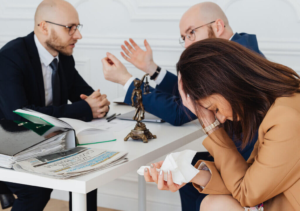SEO is about helping search engines find and present the most relevant information to users. This includes ensuring that an article’s title and other text elements are tagged in the correct text hierarchy, such as H1 for titles and H2 for subheadings.
This process of optimizing a piece of content for a specific keyword grows organic traffic over time. By understanding how search works, you can leverage its best practices to bring in more eyeballs for your business. Contact Rank Boss for more information.

Keywords are the terms that search engine users enter into their search query to find websites like yours. They can be a single word or multi-word phrases, and they are the basis for every aspect of your SEO strategy. The process of finding the right keywords is called keyword research. This is one of the most important steps in your SEO plan because it allows you to understand your audience and their needs, and it can help you create content that will rank well organically.
In order to choose the best keywords, you must consider search volume, competition, and commercial intent. It is also a good idea to use different tools, including free online resources, to help you find the right keywords for your business. Once you have a list of potential keywords, you can start creating content. The key to successful keyword utilization is to ensure that they are naturally incorporated into your content. However, you should avoid putting too many keywords on your page or post. Using too many keywords can make your content unreadable and will affect your ranking in search engines. A good rule of thumb is to use your keywords about 1 or 2 percent of the total number of words on your page.
When choosing keywords, you must ensure that your content matches the user’s intent. For example, if someone searches for “how to bake a cake” and you only provide recipes, you will not rank highly in search engines. You should focus on buyer intent and create content that will answer their questions.
Another way to maximize your SEO is by using your keywords in meta descriptions. This will help you stand out in search results and will increase the likelihood that your site will be clicked on. In addition, you can include your keywords in the image alt text on your website.
Ideally, your keyword should appear early on in the title tag. This will help Google and other search engines understand what your page is about. It is also a good idea to add your keyword in the first paragraph of the body text.
Content
Content is the foundation of any website and it plays a crucial role in SEO. Creating high-quality SEO content can help businesses improve their search engine rankings, drive organic traffic and increase sales. However, many companies misunderstand what SEO content is and fail to take advantage of it. In this blog post, we’ll explore how to create and optimize SEO content for maximum success.
The key to successful SEO content is to understand what your audience is searching for. This will help you create relevant content that addresses the user’s intent and encourages them to take action on your site. In addition, you should know which keywords your target audience is using to find your content.
Unlike traditional written content, SEO content can be delivered in other formats such as infographics, video or podcasts. These formats are more likely to get shared and linked to by others, increasing your chances of getting in the SERPs. When creating SEO content, be sure to include the keyword in your title and meta description so search engines can identify what your page is about.
Another important aspect of SEO writing is to ensure your content is readable. Break up long blocks of text by adding subheadings or using bullet points to make it easier for people to scan your content. You should also use headings and bold text to highlight important keywords. Finally, make sure your content is backed up by research. This will ensure that your content is useful and trustworthy, which will increase its ranking in search results.
There is much debate about the ideal word count for a given piece of content. While this metric may have some value, it’s important to remember that SEO writing should be written for users, not search engines. In other words, don’t overstuff your content with keywords to rank higher in the SERPs.
While it’s hard to give broad advice on writing SEO content, it’s important to remember that each page of your site will require a different type of writing. For example, an e-commerce product page will need to be more descriptive than a long-form evergreen advice guide. Additionally, each page should be optimised to meet its unique goals.
Link building
A key component of a successful SEO strategy is link building. This process involves creating a network of links that demonstrate your expertise in a given field to Google and helps it understand how pages relate to one another. The more quality links you have, the higher your page will rank in search results.
There are many ways to build links, but the best way is to create content that your audience will find valuable. This is true for both internal and external links. External links are called backlinks, and they come from other websites. They are a critical part of your site’s ranking algorithm, but they are not the only factor.
To make your content more linkable, research what your competitors are doing to earn links. Learn what keywords they’re targeting, and what types of posts they publish. You can also use tools like Semrush to identify high-quality prospects (websites that might be willing to link to you). But remember, good content isn’t enough on its own. Even the most link-worthy pages need to be promoted. Otherwise, people will never know about them.
The best link-building strategies focus on building relationships with other sites in your industry. This can be done through social media, forums, and conferences. It’s also possible to reach out directly to other webmasters and ask for a link. This technique is often referred to as “guest blogging.” But be careful not to engage in any tactics that could be considered spamming. Such tactics can get your website banned by Google.
You can also try to generate new links by promoting your content on social media or other social channels. This is known as “content syndication.” This technique can be time-consuming, but it can pay off in the long run.
The final step in link building is to monitor your progress and evaluate your success. If you’re not seeing the results you want, it may be time to tweak your strategy. If you’re doing everything right, you should see a steady increase in your traffic. You can then take a look at your competitor’s websites to see how they’re getting links and what kind of content they’re creating.
Analytics
In SEO, analytics refers to the collection and analysis of data from your website or marketing campaigns to uncover meaningful patterns that can inform better decision making. Using these insights, you can measure the effectiveness of your strategies and determine where to allocate future investments of time and resources. Analytics can also help you identify new opportunities for search engine optimization and improve your overall website performance.
There are many tools available for analyzing SEO data, including Google Analytics, Search Console, and Data Studio (formerly Looker). However, these platforms require time-consuming setup and are often not user-friendly. Moreover, they do not provide a single platform for reporting on SEO results to clients. Instead, it is better to use an automated SEO reporting tool that can send key metrics to your client on a daily, weekly, or monthly basis. This way, you can impress your client and keep them engaged for the long haul.
Search Engine Optimization has evolved from a reactive strategy to one that is predictive in nature. Predictive analytics allows digital marketers to forecast the impact of SEO efforts on their online visibility with more accuracy than ever before. This capability allows them to avoid expensive marketing dead ends and focus on high-impact tactics.
SEO analytics provides a wide range of insights into your website’s performance and user behavior. Using these insights, you can optimize your website for search engines and generate more traffic. It can also be used to understand your competitors’ strategies and improve your own.
The first step in interpreting SEO analytics is to set goals for your campaign. These goals should be SMART, meaning they are specific, measurable, attainable, relevant, and time-bound. These goals should be based on your target audience and the products or services you offer.
Once you’ve set your SEO goals, it is important to track their progress. A great way to do this is through a white-labeled rank tracker. It can be integrated into your agency dashboards and customized to meet your client’s needs. It also helps you save billable hours by consolidating data from various tools into a single report.

